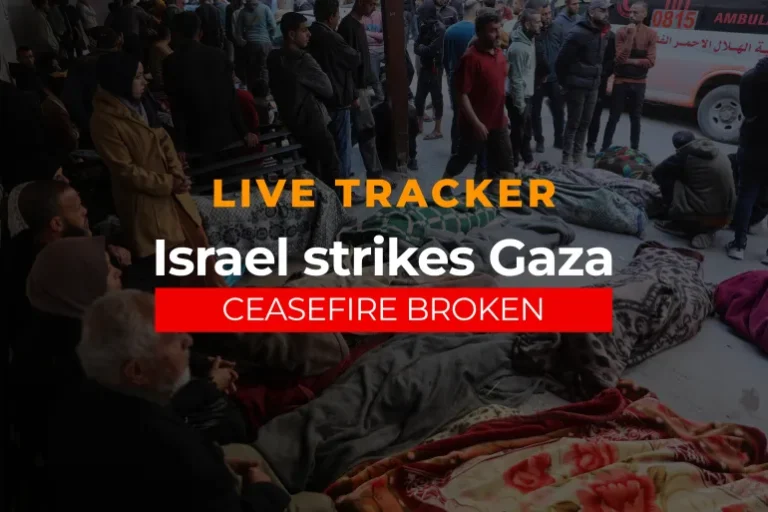The fragile peace in Gaza has been shattered. After weeks of relative calm, violence has returned, claiming over 400 lives as Israeli airstrikes hit the region following rocket fire into southern Israel.
When Hope Faded
 For a brief moment, things almost seemed normal again. The ceasefire had been holding steady. Markets were open. Kids played outside. Families tried to rebuild their lives.
For a brief moment, things almost seemed normal again. The ceasefire had been holding steady. Markets were open. Kids played outside. Families tried to rebuild their lives.
Then it happened. Rockets launched from Gaza into Israel. The response was swift and devastating. And just like that, we were back where we started.
The Real Toll

The numbers are hard to process—400+ dead, countless wounded—but behind each number is a real person. A student who won’t finish school. A mother who won’t see her children grow up. A family forever changed.
I spoke with Dr. Samira at a Gaza City hospital yesterday. Her eyes were red from exhaustion.
“We’re out of almost everything,” she told me, her voice breaking. “Medicine, bandages, electricity. We’re making impossible decisions every hour.”
Ahmed, cradling his youngest child, described the constant fear. “My kids keep asking when it will end. What am I supposed to tell them?”
A Crisis Without Borders

This isn’t just a local conflict. The ripple effects are being felt across the Middle East and beyond. While Israel maintains it’s targeting militant structures, the civilian toll continues to mount as schools and residential buildings crumble.
The international community has issued the usual statements of concern, but on the ground, little changes. Peace talks seem further away than ever.
People, Not Politics

In the end, this crisis isn’t about political positions or historical grievances—it’s about human beings. It’s about the elderly woman I saw yesterday, clutching a photo of her grandson as she stood in front of what used to be their home. It’s about the doctor working his third straight shift. It’s about the children who now flinch at any loud sound.
Food and water are scarce. Thousands have nowhere to go. And humanitarian groups can’t safely deliver aid while bombs are falling.
What’s Next?

I wish I had answers. Everyone here does. The cycle feels unbearable yet somehow continues. What’s clear is that statements and tweets aren’t enough. Real action—a true ceasefire, humanitarian corridors, genuine peace efforts—is desperately needed.
Until then, people here will do what they’ve always done: survive, one day at a time. But at what cost to their hearts and minds?
References For the latest updates on this developing story, refer to credible news sources:FREQUENTLY ASKED QUESTIONS (FAQ)
What caused the recent ceasefire between Israel and Gaza to collapse?
The ceasefire collapsed due to allegations of violations from both sides, with Israel citing rocket fire from Gaza and Hamas claiming Israeli military incursions into restricted areas. Tensions had been building for weeks before the full breakdown of the agreement.
How many casualties have been reported since the violence resumed?
Over 400 deaths have been reported since the ceasefire collapsed, with casualties on both sides. The majority of fatalities are civilians in Gaza, where infrastructure damage has also been extensive.
What international response has there been to the renewed conflict?
International bodies including the UN have called for an immediate de-escalation and return to ceasefire terms. Several countries have issued statements condemning the violence, while diplomatic efforts to restore peace are underway through various channels.
How is this escalation affecting civilian populations in the region?
Civilians in Gaza are facing severe humanitarian challenges including power outages, limited access to clean water, and overcrowded shelters. In Israel, communities near the Gaza border have been evacuated as rocket alerts continue.
What are the prospects for a new ceasefire agreement?
Diplomatic sources indicate that mediators from Egypt and Qatar are working urgently to broker a new ceasefire, but positions have hardened on both sides. Analysts suggest that reaching a new agreement may require significant international pressure and concessions from both parties.








